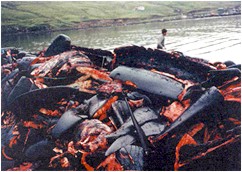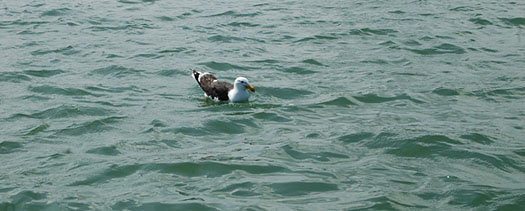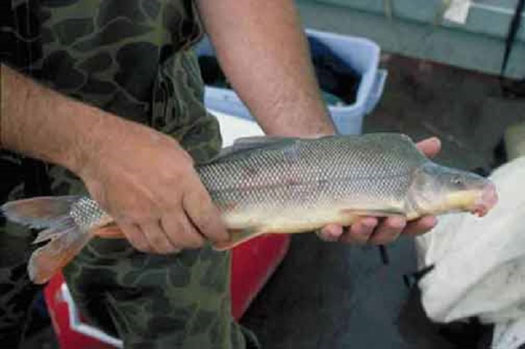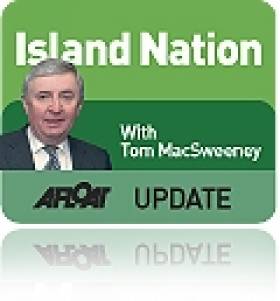Displaying items by tag: Antartica
New Tony Castro Designed Expedition Pelagic 77 Yacht Built in Aluminium is Launched
The latest Tony Castro design has hit the water in Holland, a new 77-foot expedition yacht that will voyage to the Antarctic under round-the-world skipper Skip Novak.
The designer of the Clipper 23m racing fleet, the SB20 sportsboat but probably best known in Ireland for his design of Royal Cork’s 1720, Solent-based Castro was unable to witness this week's launching due to ongoing COVID-19 travel restrictions.
The vessel has been under construction at KM Yachtbuilders since early in the summer of 2019. Work will be continuing for a few weeks after the launch on the finishing, commissioning and sea trials
It was anything but a dull Monday morning in Makkum. While most of the villagers were still sleeping, at 06:00 AM the yard of KM Yachtbuilders was already abuzz with activity. This is the day when the expedition vessel Pelagic 77 was launched. Her two carbon masts were set immediately after the launch. Her official name is now 'Vinson of Antarctica', after the highest mountain on the Antarctic continent.
 Two carbon masts were set immediately after the launch
Two carbon masts were set immediately after the launch
The vessel has been under construction at KM Yachtbuilders since early in the summer of 2019 and work will be continuing for a few weeks after the launch on the finishing, commissioning and of course the sea trials. This will take place on the North Sea and the first trip will be to Norway. After the summer, the crew plans to sail to South America, ending at Puerto Williams in Chile, the southernmost inhabited place in the world.
Among those present to add lustre to today's milestone were Jordi Griso on behalf of the owner Nicolás Ibáñez Scott, Chilean entrepreneur and adventurer, and the permanent crew led by Kenneth Perdigon. Due to current travel restrictions, Skip Novak, the well-known ocean sailor and representative of the charter company Pelagic Yachts and designer Tony Castro, were, unfortunately, unable to attend.
Construction Supervisor Peter Wilson of MCM Newport also had to step aside, but he made the following statement: "I was honoured to be asked by the project team to join them in 2018, sharing with them the construction and management expertise acquired through over 90 MCM projects to date. KM Yachtbuilders had already been selected to build the yacht. With their long track record in building go-anywhere yachts, they were a perfect match for this project. So with a team consisting of Novak, Castro and KMY, it wasn't a hard choice for me to join them. I have absolutely no regrets about this choice. We all look forward to testing 'Vinson' in the brutal North Atlantic soon."
 The first trip will be to Norway. After the summer, the crew plans to sail to South America, ending at Puerto Williams in Chile, the southernmost inhabited place in the world Photo: Guy Fleury
The first trip will be to Norway. After the summer, the crew plans to sail to South America, ending at Puerto Williams in Chile, the southernmost inhabited place in the world Photo: Guy Fleury
Mr Novak adds: "This expedition ship builds on the successes of the Pelagic Australis and was conceived and designed for high latitude expedition voyages. That calls for a high level of self-reliance, practical ease while sailing and of course, given the Pelagic philosophy, simple systems that can be easily maintained even in remote areas without specialist help."
The Pelagic 77 'Vinson of Antarctica', with a centreboard and fixed keel box, is a schooner with a modern design and two carbon masts so that the sail area is distributed and all sail systems, such as winches and jib rollers, can still be operated by hand. At 150 hp, the two Yanmar engines provide ample power. When they're not on deck, guests on board can also relax in the comfortable living area of the large pilothouse or in the stern galley. In the foreship there are six double cabins and two communal toilets and showers. The style of the interior is kept light with bamboo furniture. The vessel will be used for charter trips from Puerto Williams in South Chile as well as for private purposes.
Pelagic 77 Specifications
Yard: KM Yachtbuilders, Nederland
Representative: Skip Novak, Pelagic Yachts
Architect: Tony Castro Design
Supervisor: Peter Wilson, MCM Newport
- LoA: 23.50 m
- LwL: 20.55 m
- Beam: 6.20 m
- Draught: 2.15 - 4.30 m
- Material: Aluminium
- Engines: 2x Yanmar 150 hp
- Mast: 2x Axxon, carbon
- Interior: Bamboo
- People: 8 guests and 3 crew
Shackleton's Island Resting Place Now On Google Street View
#Shackleton - When famed Irish explorers Ernest Shackleton and Tom Crean set foot on the island of South Georgia in 1916, it was as remote as one could get in the world at that time.
Fast forward to 2014 and the vistas of that Southern Ocean outcrop are available to all, thanks to an intrepid hiker equipped with Google's Trekker backpack camera.
As TheJournal.ie reports, Linbald Expeditions and National Geographic sent one of their videographers with the special 360-degree camera unit to capture images for the Google Street View virtual mapping service.
And the fruits of that adventure are some 10,000 shots taken across nine locations, roughly plotting the path that Shackleton and his crew took on their pioneering Endurance voyage - and their epic journey to seek rescue when the ship was trapped in ice.
Crean and four others joined Shackleton to set out across 1,300km of open ocean from Elephant Island on the edge of the Antarctic to South Georgia, where they were the first known to traverse its hostile landscape to reach the help they needed.
Even today that land is rarely visited, with a population of just 30 or so - mostly scientists and staff of the British Antarctic Survey.
But now anyone in the world can have a glimpse of its rugged natural beauty, from the penguins of Right Whale Bay to Shackleton's final resting place.
TheJournal.ie has much more on the story HERE.
#thisislandnation – Enjoying the current good spell of weather in the South of the country I have been reflecting on how marvellous Nature and marine wildlife is and how fortunate it is to have ownership of a boat which allows one to enjoy the sea.
Nature is marvellous and the sea a magnificent provider. Out comes the sun and where do people head for – the beaches and the sea. Provided by the physical location of this island nation where no place is more than 70 miles from the sea measured in those grand old Irish miles before a subservient political establishment re-named them kilometres to conform to European-ism. Perhaps ready access to the beaches might convey to people the value of living in an island nation, but many of those who headed for the beaches did not show much respect for the physical nature of those beaches, leaving mounds of rubbish behind.
Another aspect of Nature was in a picture which impressed me this week - that of 24-year-old David Kenefick rounding the Fastnet Rock off the West Cork coast in the single-handed French Figaro Race. Taken by photographer Bob Bateman as David sailed through waters with which he has been familiar since a young lad, he was watched by his family who had gone out by boat to cheer him on as he set course towards the French coastline. A young man determined to succeed in the tough world of professional sailing, using the power of Nature, the wind, the tides. He follows on a good friend of mine, Damian Foxall from Kerry, whose path to professional success was via the Figaro Race.
B31 ICEBERG, ANTARCTICA
Scientists are continuing to monitor an iceberg roughly six times the size of Manhattan, New York, which broke off from an Antarctic glacier. NASA glaciologist Kelly Brunt said the iceberg covers about 255 square miles (660 square km) and is up to a third of a mile (500 meters) thick. Known as B31, it separated from Antarctica's Pine Island Glacier last November. U.S. government organisations, including the National Ice Center and NASA are monitoring it. Scientists are particularly interested in this iceberg not only because of its size but because it originated in an unexpected location. "It's like a large sheet cake floating through the Southern Ocean," according to NASA
DISTURBING SLAUGHTER
What disturbed me most this week was the intention of the Faroe Islanders to continue their annual slaughtering of pilot whales. This is carried out by luring the cetaceans using sounds such as hitting wood against boats, into bayed areas where they are then killed in what appears to be a vicious blood-letting. The conservation group, Sea Shepherd, which has been controversial in some of its actions, is mobilising supporters to go to the Faroes which is Danish territory, to oppose the slaughter, called locally 'the grind.' The Sea Shepard campaign, referred to as 'Operation GrindStop 2014,' has no authority, but says its volunteers will disrupt the 'grind' and are prepared to go to jail to protect these marine animals. Sea Shepherd was formed in 1977 by an expelled Greenpeace board member and activist Paul Watson. Since Sea Shepherd's formation, the organisation has been involved in direct action and has been accused of being an "eco-terrorist" organisation which description it has rejected. It describes itself as "Neptune's Navy" which "Never Compromises."

Whale slaughter on the Faeroe Islands. Photo courtesy: Sea Shepherd
The Danish Government allows the killings. At one time whalemeat was a staple diet of Faeroe Islanders but in recent years medical advice has told the islanders not to eat so much of it. More than 265,000 small cetaceans in total have been reportedly killed in the Faroe Islands over the years, mainly between the months of June and October, according to Sea Shepherd - some 1,500 since July 2013.
What happens in the Faeroes is so much of a contrast to how whales and dolphins are valued in Irish waters, which are a protected area and where the sight of whales and dolphins is a treasured experience.
Another example of the differences in how Nature is perceived in different parts of the world is the deceitfulness of the Japanese where the killing of whales is concerned. Japan has caught and killed 30 minke whales in its first hunt since and despite the International Court Justice ruling earlier this year that specifically banned such practices. The Japanese Government claims that these killings were for scientific research, a statement that is not fooling anyone.
BUILT-IN NAVIGATOR
Turning back to the positives of Nature, I was enjoying a leisurely lunch moored in Crosshaven when the gull photographed here arrived to seek food.

A good navigator
A few titbits were passed outwards and I admired his navigational expertise. From his low perspective on the water the slight swell would obscure the titbits as the floated outwards, but unerringly the bird could pick up any titbit, homing in on it, no matter what angle it approached from. It was intriguing to watch. Built-in navigation?
SUCKER GETS ANOTHER CHANCE

A Razorback suckerfsh
Nature can recover from setbacks, which has been shown this week in the Grand Canyon National Park in the US where the "extremely endangered species of fish" - Razorback Suckers - have been discovered spawning in the canyon after being absent for more than two decades. The photograph by Johnson Joames of the US Fish and Wildlife Service shows that the endangered fish has returned to the lower part of the Colorado River within the Grand Canyon National Park. Despite their name, razorbacks are harmless fish, characterised by the high sharp-edged hump behind their head.
CHANGING NATURE IN CORK HARBOUR
The use of Nature does bring changes, which are very apparent in Cork Harbour where I sail. Three massive wind turbines are now in place, quite dominant as they are almost 500 feet high. By contrast, Dublin's Spire in O'Connell Street which has been described as soaring to infinity is only 390 feet high. I am not advancing this as one up for Cork! Opinions about the turbines are mixed. They were built without any major public planning opposition to provide power for the pharmaceutical industry in Ringaskiddy. There is, however, opposition to the renewed plans for the building of a new container port at Ringaskiddy. Cork Port's plans for this are being objected to by harbour residents. Noise and other pollution aspects are the reason.

New look Cork Harbour
The Port company says the development is essential economically and because of the increasing size of ships. They maintain Ringaskiddy is the natural place for the development. Local opposition says the new port should not be built in the middle of a residential area and allege that it will affect leisure use of the harbour. Another issue about the Natural environment.
Finally, the beauty of Nature and what man creates, my photograph shows the sight of a beautiful wooden sailing vessel in Cork Harbour where traditional boats gathered at Crosshaven last week and whose next gathering will be in Cobh next weekend.
Respecting what Nature provides is a hallmark of quality in human beings.
Twitter: @afloatmagazine @TomMacSweeney































































